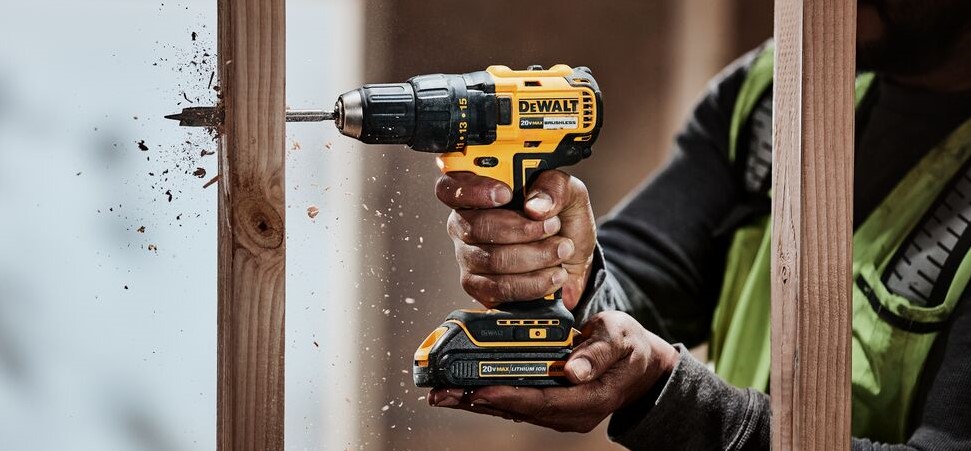Drilling out rivets can seem daunting, but with the right techniques and tools, you can tackle this task like a pro. Whether you’re working on a DIY project or repairing machinery, understanding how to properly remove rivets is essential for ensuring a clean and effective outcome.
In this guide, you’ll discover the step-by-step process to safely and efficiently drill out rivets. From selecting the right drill bits to mastering the technique, you’ll gain the confidence needed to handle any rivet removal job. Let’s dive in and simplify this task so you can get back to your project without a hitch.
Tools You’ll Need
Gathering the right tools ensures efficient rivet drilling. Below are the essential tools you’ll require for this task.
Drill Types
- Corded Drill: Provides consistent power for heavy-duty applications. Ideal for tougher materials.
- Cordless Drill: Offers portability and convenience. Great for projects needing mobility.
- Hammer Drill: Used for drilling into tough materials like concrete. Adds percussion for effective drilling.
Drill Bits
- Cobalt Bits: Durable and heat-resistant. Suitable for drilling harder metals.
- HSS Bits: High-speed steel bits work well for general metal applications. Affordable and versatile.
- Carbide-Tipped Bits: Excellent for challenging drilling tasks. Effective in non-ferrous metals and plastics.
Safety Equipment
- Safety Goggles: Protects your eyes from metal shavings and debris. Vital for maintaining eyesight.
- Hearing Protection: Reduces noise exposure from powerful drills. Essential for long-term usage.
- Gloves: Maintains grip and protects your hands from sharp edges or hot surfaces. Always wear suitable gloves during the process.
Preparation Steps
Preparing for rivet removal involves careful assessment and marking. Following these steps ensures a more effective drilling process.
Assessing Rivet Type
Identify the rivet type before drilling. Common types include solid, blind, and pop rivets, each demanding different drilling approaches. Solid rivets typically require a larger bit compared to blind or pop rivets. Knowing the material helps select the appropriate drill bit, as materials like aluminum or steel respond differently to drilling. Additionally, observe the rivet’s diameter to choose the correct bit size for efficient removal.
Marking the Rivet Center
Mark the center of the rivet accurately. Use a center punch to create a small indentation at the marked location. This indentation guides the drill bit and prevents it from wandering during drilling. Aim for precision; a well-marked center increases the chances of cleanly drilling out the rivet without damaging surrounding materials. Ensure the marking is visible and precise before proceeding with the drilling process.
Drilling Process
The drilling process involves key steps to ensure successful rivet removal. You must pay attention to speed and technique for optimal results.
Choosing the Right Speed
Choosing the right speed is crucial for effective drilling. Use a lower speed setting for tougher materials like steel, typically around 500 RPM. For softer materials, such as aluminum or plastic, increase the speed to between 1,500 and 3,000 RPM. Adjust based on the drill bit diameter; larger bits generally require slower speeds to maintain control and prevent overheating.
Drilling Technique
Employing the correct drilling technique enhances accuracy and efficiency. Start with a firm grip on the drill, maintaining a steady pressure without excessive force. Align the drill bit at a 90-degree angle to the rivet surface. Begin the drill slowly to ensure a precise entry, then gradually increase speed as the bit penetrates. Clear debris regularly from the drill bit to maintain visibility and progress. If you encounter resistance, pause to avoid damaging the drill bit or surrounding material.
Post-Drilling Steps
After drilling out rivets, take critical steps to ensure a clean finish and assess the work area for any potential issues.
Removing Debris
Removing debris is essential for maintaining a safe and effective workspace. Use a brush or compressed air to clear away metal shavings and dust from the drilled area. Ensure no remnants obstruct further work or create hazards. Clean the surrounding surface as well, preventing any accidental slips or injuries during subsequent steps.
Inspecting for Damage
Inspecting for damage is vital after rivet removal. Examine the surrounding material for any cracks or warping caused by the drilling process. Check for any irregularities that may compromise structural integrity. If damage is noted, assess the need for repairs or reinforcements before proceeding. Make sure your inspection covers all areas affected by the removal to guarantee a safe and reliable outcome.
Conclusion
Successfully drilling out rivets can open up new possibilities for your projects. By following the right techniques and using the appropriate tools you can make this task easier and more efficient. Remember to prepare adequately and prioritize safety to create a smooth workflow.
Taking the time to assess the rivet type and selecting the right drill bit will lead to better results. After drilling always inspect the area for any potential damage to ensure everything remains structurally sound. With practice and attention to detail you’ll gain confidence in your rivet removal skills.

Hi, I’m Md Rofiqul, a gardening enthusiast who loves spending time in the garden and backyard. I enjoy caring for plants, growing flowers and vegetables, and creating a green space that feels peaceful and refreshing. Gardening is more than just a hobby, it’s a passion that connects me to nature and brings joy to my daily life. Living with plants inspires me to embrace simplicity, patience, and sustainability while making every day more colorful and rewarding.
